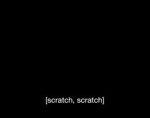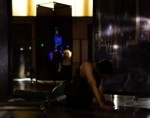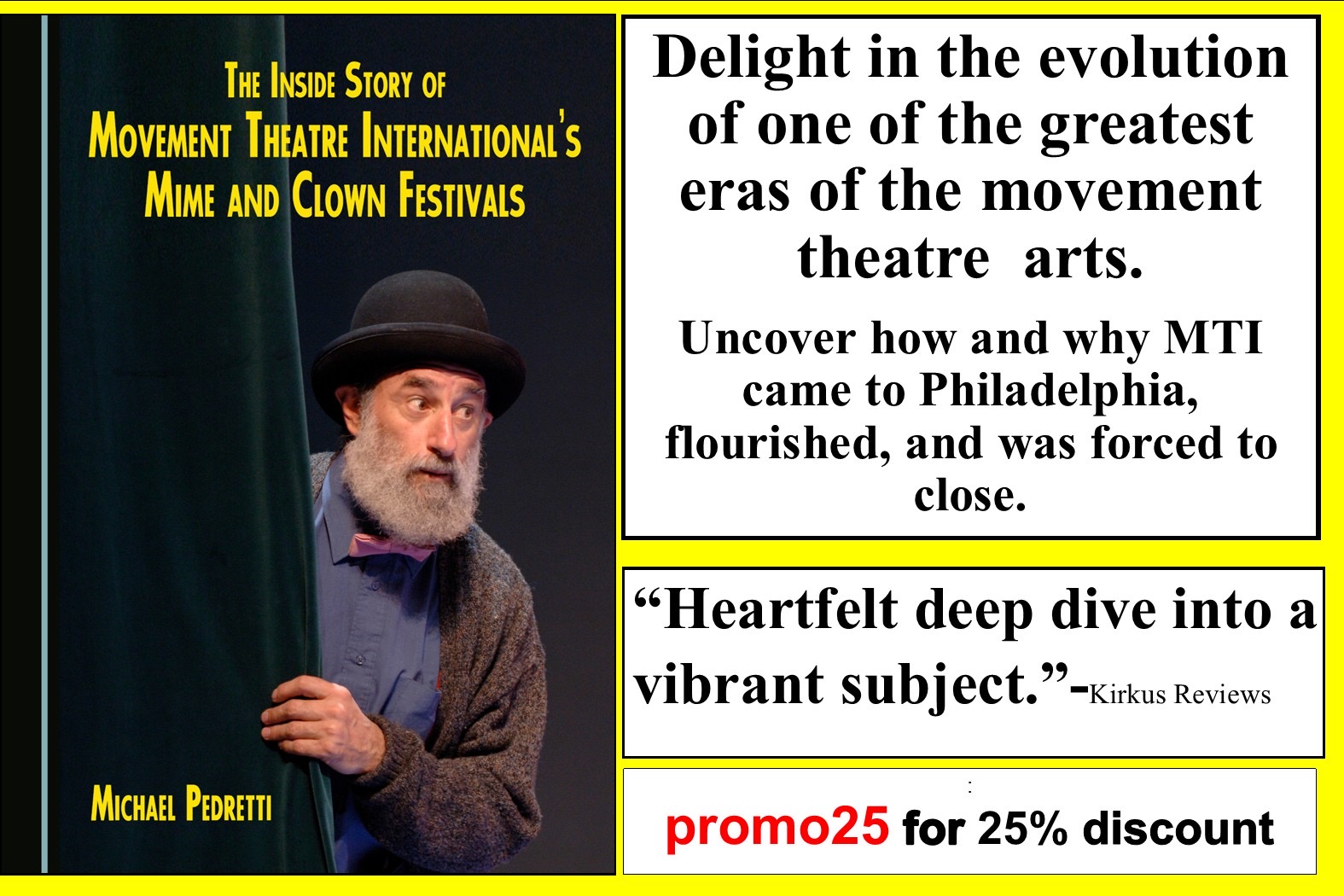
Dance Films Provide Pandemic Solace
by Ellen Chenoweth
For the past 10 months, I’ve had a hard time staying fully engaged during virtual dance presentations, which sometimes only highlight what is missing: a sense of liveness, palpable presence, the feel of other people taking in the same experience all around. As critic Helen Shaw has observed about the absence of the usual performance festivals in New York in early January, “clicking from window to window isn’t a festival. There’s no sense of jubilee there; each online event droops like a sad little flag caught in the rain.” I give a sincere and hearty round of applause for anyone trying to create work right now, but sometimes after a virtual performance I feel my pandemic isolation even more acutely.
So what’s a dance lover to do? My answer has been to turn to films and documentaries, where I’m able to learn more about a form of dance and enjoy it in a medium that was actually intended for a screen from the get-go. During a time when it’s difficult to meet new people, go new places, or have new experiences, I’ve found some solace in learning and hearing new stories. Here are a few films that have helped me cope with the lack of live, in-person performances during the pandemic.
And Then We Danced, 2019
This film and its star, Levan Gelbakhiani, have stayed with me for the months since I watched this gorgeous feature that centers on a traditional Georgian dance company with a tyrannical director and two rebellious students. The film’s celebration of gay love caused riots by right-wing protesters in Tbilisi, highlighting the danger that queer Georgians face every day. And Then We Danced packs a visceral punch, allowing the viewer to wander through rooms at a wedding reception, almost able to smell the smoke and taste the wine, and provides plenty of vigorous and virtuosic Georgian folk dancing. (Available on Amazon Prime.)
Crutch, 2020
The DOC NYC Festival premiered this documentary, which focuses on dancer and choreographer Bill Shannon. I loved the look at his skateboarding youth and stick-it-to-the-man attitude, which he was seemingly born with and has cultivated through the present. His performance pieces on Chicago sidewalks, made while a student at School of the Art Institute of Chicago, are fascinating and provocative, dismantling traditional pity narratives and prejudices around physical disability. The ways that critics have misread or misunderstood his work, and the effect these gaps of understanding have on Shannon, will hit hard for any artist who has been wronged by a critic or anyone writing about dance. (Screenings will be listed on the film website.)
Uprooted: The Journey of Jazz Dance, 2020
Khadifa Wong’s documentary completely blew me away. Powerfully interweaving dance footage from a multitude of companies and an abundance of scholars and dancers, this history of jazz dance in the United States is dynamic and persuasive. In a field where white male choreographers more readily become part of the canon, this documentary is a vital corrective: it tells a story that includes JoJo Smith, Fred Benjamin, and others who deserve to be celebrated in our dance histories. An instant and compelling classic. (More information is available on the film’s website.)
Thinking On Their Feet: Women of the Tap Renaissance, 2010
Completed in 2010 but only made available for on-demand viewing during the pandemic, Thinking On Their Feet focuses on female tap dancers of the ’70s and ’80s who are credited with keeping the form vibrant. Directed by Jenai Cutcher, the documentary includes rehearsal and performance footage that I would never have otherwise been exposed to, and I came away both educated and entertained. (Available for rent or purchase on Vimeo.)
Joffrey: Mavericks of American Dance, 2012
Although this film is usually unavailable, the Joffrey Ballet made the full-length PBS documentary available on its YouTube channel for several weeks early in the pandemic. With footage from Kurt Jooss’s The Green Table and the company’s reconstruction of Leonide Massine’s Parade, the film offers a glimpse of Robert Joffrey’s company from its inception to more recent decades. Although his name is not reflected in the title, Gerald Arpino’s crucial role in the company’s development is also highlighted. I would love for this documentary to be regularly accessible. (More information is available on the film’s website.)
Everything Remains Raw: Hip-Hop’s Folkloric Lineage, (in progress)
Moncell Durden has been crafting this labor of love for a number of years. UC San Diego screened the documentary in progress, along with a conversation with Durden and Ephrat Asherie. If anyone reading this is employed at a funding entity, please consider this a sincere plea: Do the entire field a favor by helping Durden get this work of art completed and distributed! This is hip-hop history, and American history, that needs shouting from the rooftops, and it isn’t readily available anywhere else. Durden proves an authoritative voice, guiding the viewer through the decades with incredible footage. (Information available on the artist’s website.)
Jingle Jangle: A Christmas Journey, 2020
If you’re a dancer or a fan, you may have made time for this one in your holiday viewing. If not, I’d recommend pausing your pandemic now to take in this blast of joy. Ostensibly set in Victorian times, it gives off a whiff of a utopian future. I now believe that every Christmas movie should include a snowball fight that turns into an exuberant dance and an all-female Black brass band. (Available on Netflix. Read Gregory King’s review.)
The following films are not technically dance films or documentaries, but I deem them dance-adjacent, and claim them for this highly subjective list.
The Forty-Year-Old Version, 2020
Radha Blank is a theater artist and playwright rather than a dancer, but the contortions this Black artist finds necessary to navigate the white theater world will likely look familiar. Blank’s belief in her artistic vision and voice, her relationships with friends and family, and her career frustrations all land as utterly true to life, sometimes painfully. But Blank’s humor keeps this buoyant film zipping along. (Available on Netflix.)
Crip Camp, 2020
Since I’m interested in how bodies can move and different people’s experiences with embodiment, I was glued to the screen for Crip Camp. Camp Jened’s glory days in the early ’70s are celebrated, letting viewers experience a bit of the anarchic and utopian joy that seemed to exude from the place. A rare haven for young people with disabilities, it was also a proving ground for those youth to hone their skills in advocacy. The film follows a number of campers who became disability rights activists, powerful and effective ones, in part because of this liberatory summer camp. (Available on Netflix.)
My Octopus Teacher, 2020
I have a theory (unproven) that Netflix’s hit documentary about a man and the unconventional intimacy he cultivated with an octopus is especially popular with dance people. Craig Foster, the diver at the heart of the film, has said, “Just under the skin we’re still fully wild. And I think this touches on what it’s like to glimpse that.” Is it a stretch to hear echoes of Isadora Duncan rippling through the water? “You were once wild here. Don’t let them tame you.” Maybe the pandemic has me imagining connections where they don’t exist, but this portrait of a man engaged in a rigorous, daily, physical practice that demands discipline and focus and led to communication without words, transformation, and discovery temporarily satisfied some of my craving for dance. (Available on Netflix.)
By Ellen Chenoweth
January 22, 2021









